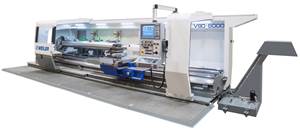Use the Machine Tool to Machine Tools
This shop has developed various time-saving tool components by creating them internally, including one tooling solution now being used by other shops as well.
Making custom workholding components is one thing. Shops mill their own fixtures all the time. But MRS Machining of Augusta, Wisconsin goes further than this. The shop routinely invents and produces its own cutting tool components as well. In fact, the boring tools that this shop created have also been adopted by several other manufacturers that learned about the potential of this tooling to simplify setups.
Matt Guse, the president of MRS Machining, says it was his knuckles that finally convinced him to create these tools.
The shop relies on multitasking. That is, much of the work here involves single-setup machining cycles on turn-mill machine tools such as Integrex machines from Mazak. Because the machining routines are complex, change-over from one job to another can entail numerous tool changes. And out of all of the tool types the shop uses, perhaps the most difficult to set up are the boring bars, because of the need to tighten these tools into collets at the machine. For years, Mr. Guse had envisioned how much easier tool change would be if the boring bar and collet were one unit—just a single piece of steel. Such a tool would save him from ever again barking his knuckles because the wrench slipped while he was leaning into the machine to tighten a collet.
Then came a lull in business several years ago. Machines were open and he had free time, so he decided to give this idea a try. The shop manufactured a set of what have since come to be called “collet-less boring bars”—bars that are integral to the toolholder body. The tools were made on some of the very machines that now employ those tools. Today, the shop uses around 50 of the integral bars in various sizes, and employees have come to think of this tooling as the natural choice for machining centerline bores. The company even established Augusta Cutting Tools, a small side business that has so far sold 25 kits of these tools to other manufacturers.
The tools do have an obvious drawback, Mr. Guse says. Because the boring bar is integral, the gage length of every tool is fixed—literally, the gage length is set in steel. As a result, a shop that needs numerous boring bar gage lengths would need to buy numerous collet-less bars, which is probably not cost-effective. But in the far more typical case of the shop that needs just a few boring bar gage lengths for all jobs, the integral-shank tools offer various benefits, he says. Improved setup time is just the beginning, because rigidity improves as well.
This rigidity can speed cycle time by permitting heavier cutting. To help with this, the bars feature through-tool coolant, which can be plumbed from the rear of the tool. Alternately, the rigidity can improve capability. Mr. Guse says the stiffness of the tool is typically enough to add 1 boring bar diameter to the boring depth. That is, if a given application allows a collet-held boring bar to reach to a depth of 4 times the bar diameter before chattering, then the collet-less bar can reach to 5 times diameter.
For MRS, an additional advantage of the success of this homemade tooling has been the way it subtly validates and reinforces a mindset about cutting tools. The shop recognizes that machining a newly designed, custom tool body is an option for any work that comes in the door. On some jobs, this option has proven decisive.
Other Tools
A seemingly simple example is the left-hand drill seen in one of the photos. On a 100-piece job, MRS wanted to shave cycle time by feeding a drill down from the turret instead of up, using the improved leverage to cut more aggressively. However, moving this way required the drill geometry to be mirrored, and MRS was unable to find a left-hand drill in the necessary size. Starting with the right-hand drill, the shop engineered its own.
Even more aggressive cutting came from the large custom tool seen in one of the other accompanying photos. For a blind 4-inch-diameter hole in a hard forging, the shop had settled for a sequence of steps: drilling with a small tool, then enlarging the hole with a series of progressively larger tools. This took time. By contrast, the large custom tool with six cutting edges machines the blind hole quickly and reliably in just one pass. By inventing this tool, MRS cut 15 minutes per piece from what remains an ongoing production job.
In one case, inventing a custom tool was essential. MRS won a job involving a 4-inch-deep groove in the face of a stainless steel O-ring. Unable to find a tool designed to make this cut, the shop once again made its own.
Finding time is the chief impediment to creating these custom tools, Mr. Guse says. The collet-less tools could only have been created when business was slow. When business is as strong as it has been recently, the staff is too busy with production jobs to model the geometry and program the cycle for a custom tool body (unless the tool clearly promises significant savings on one of those paying jobs).
Yet after the design and engineering work is done, actually making the tool is surprisingly quick and cheap. The cycle time to machine a custom tool on one of the Integrex machines is typically less than 30 minutes. The stock is often essentially free of charge, because the shop has excess material from other jobs. The collet-less bodies are made from 4142 prehardened steel remnants left over from a recurring production job. That is better-quality material than a boring bar would typically be made of, says Mr. Guse.
The speed of this machining recently caught the attention of MRS’s cutting tool distributor. For custom tooling, this distributor generally has to quote lead times of 6 to 8 weeks from its vendors. If the distributor relied on MRS instead, then that lead time could be cut to 2 weeks or less.
Mr. Guse is cautious about accepting this opportunity because he wonders how much volume of work the opportunity might bring. The business could have been welcome in some different year, but right now, he might not have the capacity. Pursuing this business might entail buying a new Integrex to equip the tool crib, which is a step he is considering. If he does this, then his shop’s tool crib would be unusual indeed. Not only would it buy tools from a supplier just like any tool crib does, but it would sell tools to that supplier as well.
Related Content
When Organic Growth in Your Machine Shop Isn’t Enough
Princeton Tool wanted to expand its portfolio, increase its West Coast presence, and become a stronger overall supplier. To accomplish all three goals at once, acquiring another machine shop became its best option.
Read MoreHow to Start a Swiss Machining Department From Scratch
When Shamrock Precision needed to cut production time of its bread-and-butter parts in half, it turned to a new type of machine tool and a new CAM system. Here’s how the company succeeded, despite the newness of it all.
Read MoreWatchmaking: A Machinist’s View
Old-world craftsmanship combines with precision machining on a vertical machining center and Swiss-type lathe to produce some of the only U.S.-made mechanical wristwatch movements.
Read MoreWeiler to Debut New Automation Features For Its Lathes
Weiler’s V 110 four-way precision lathe introduces features new to the U.S.
Read MoreRead Next
The Cut Scene: The Finer Details of Large-Format Machining
Small details and features can have an outsized impact on large parts, such as Barbco’s collapsible utility drill head.
Read MoreObscure CNC Features That Can Help (or Hurt) You
You cannot begin to take advantage of an available feature if you do not know it exists. Conversely, you will not know how to avoid CNC features that may be detrimental to your process.
Read More3 Mistakes That Cause CNC Programs to Fail
Despite enhancements to manufacturing technology, there are still issues today that can cause programs to fail. These failures can cause lost time, scrapped parts, damaged machines and even injured operators.
Read More
.jpg;width=70;height=70;mode=crop)

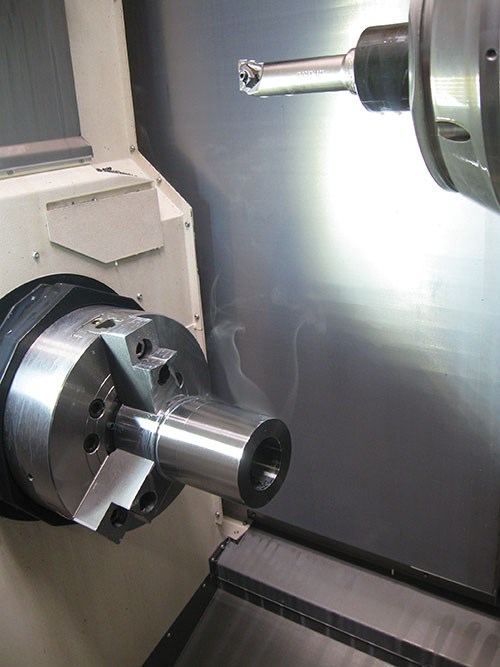
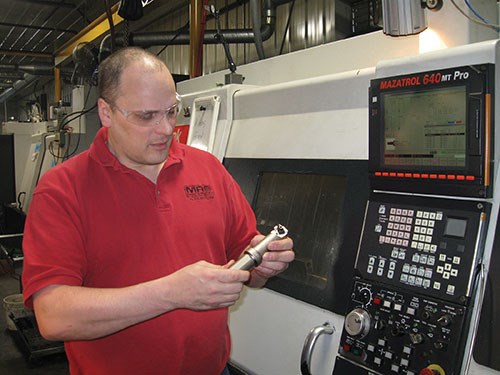

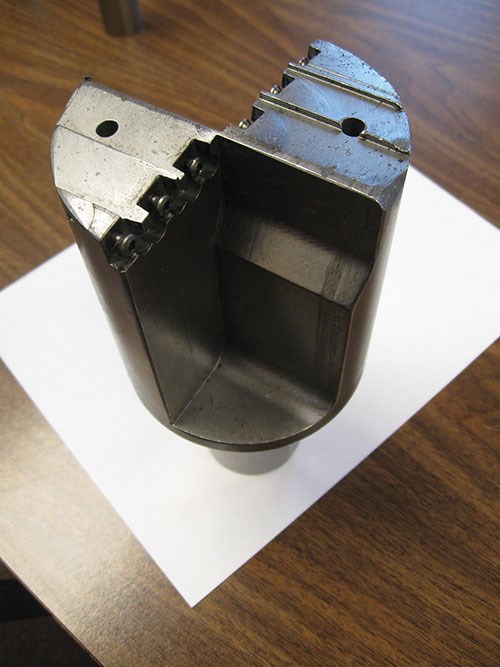










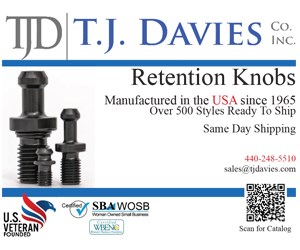






.png;maxWidth=300;quality=90)
.png;maxWidth=300;quality=90)







